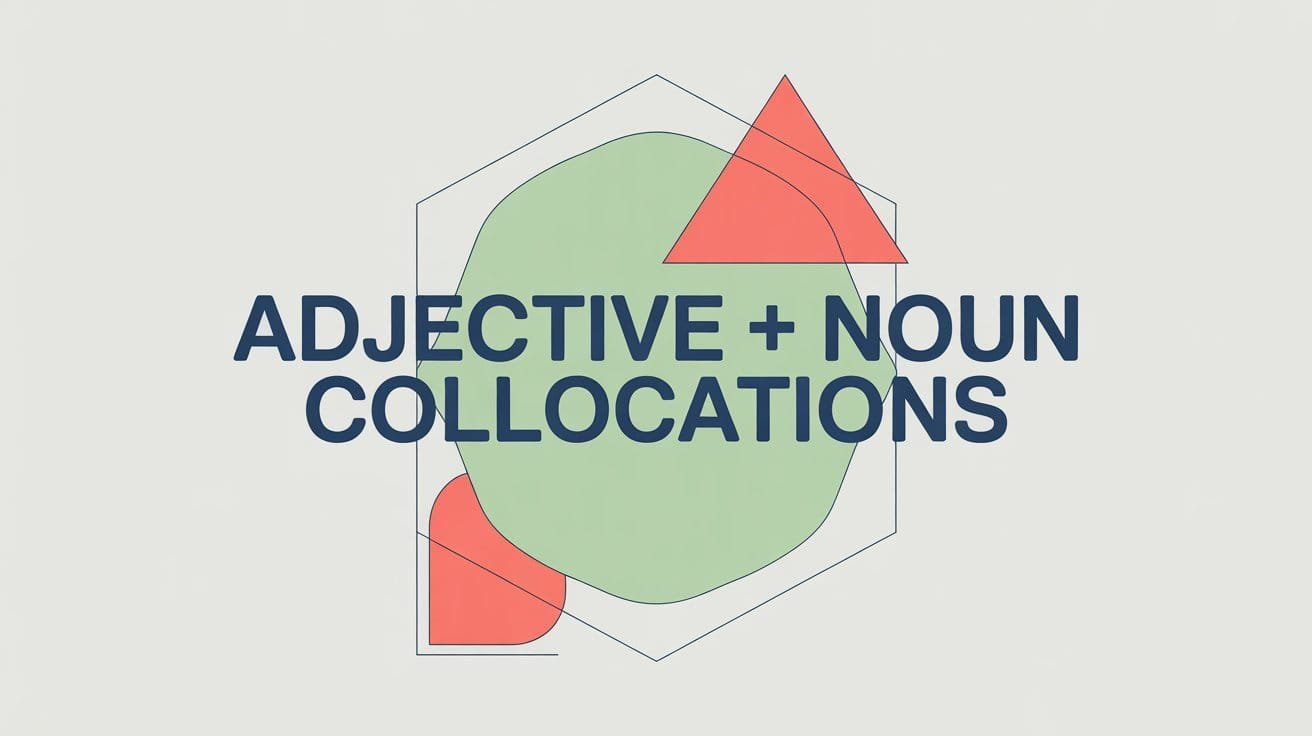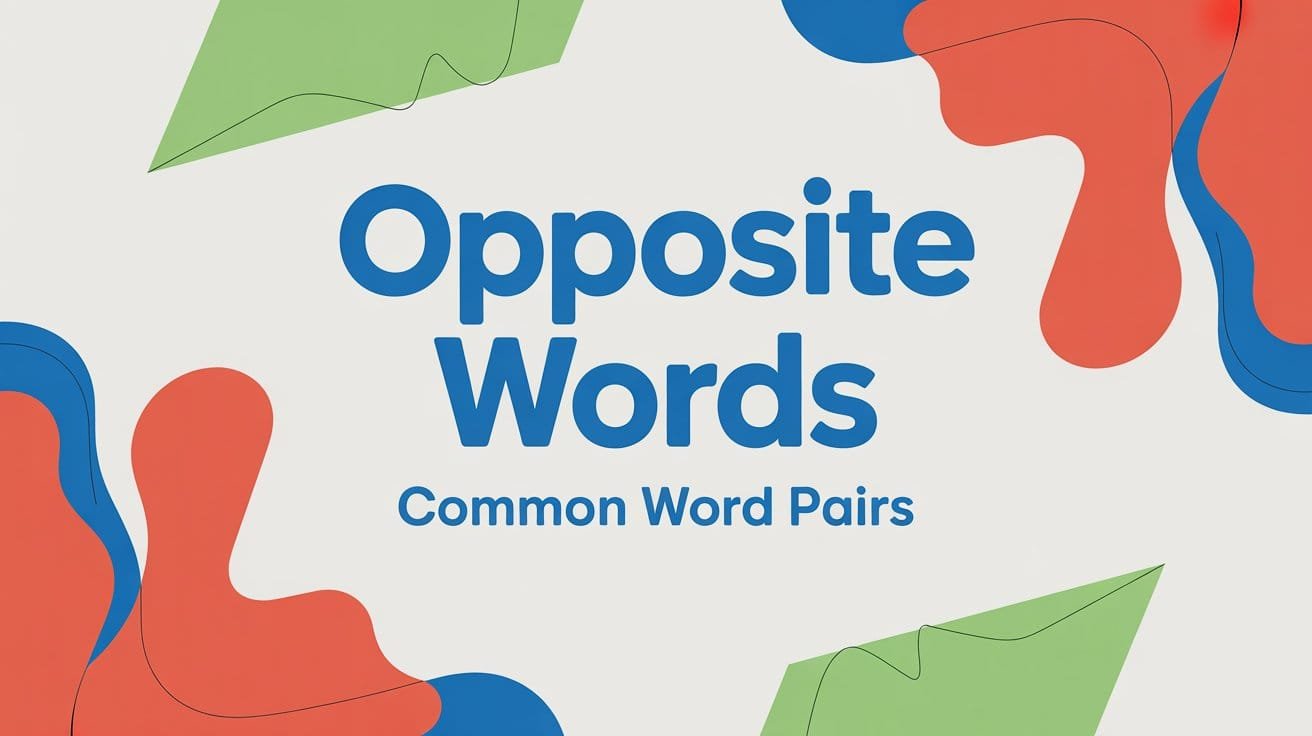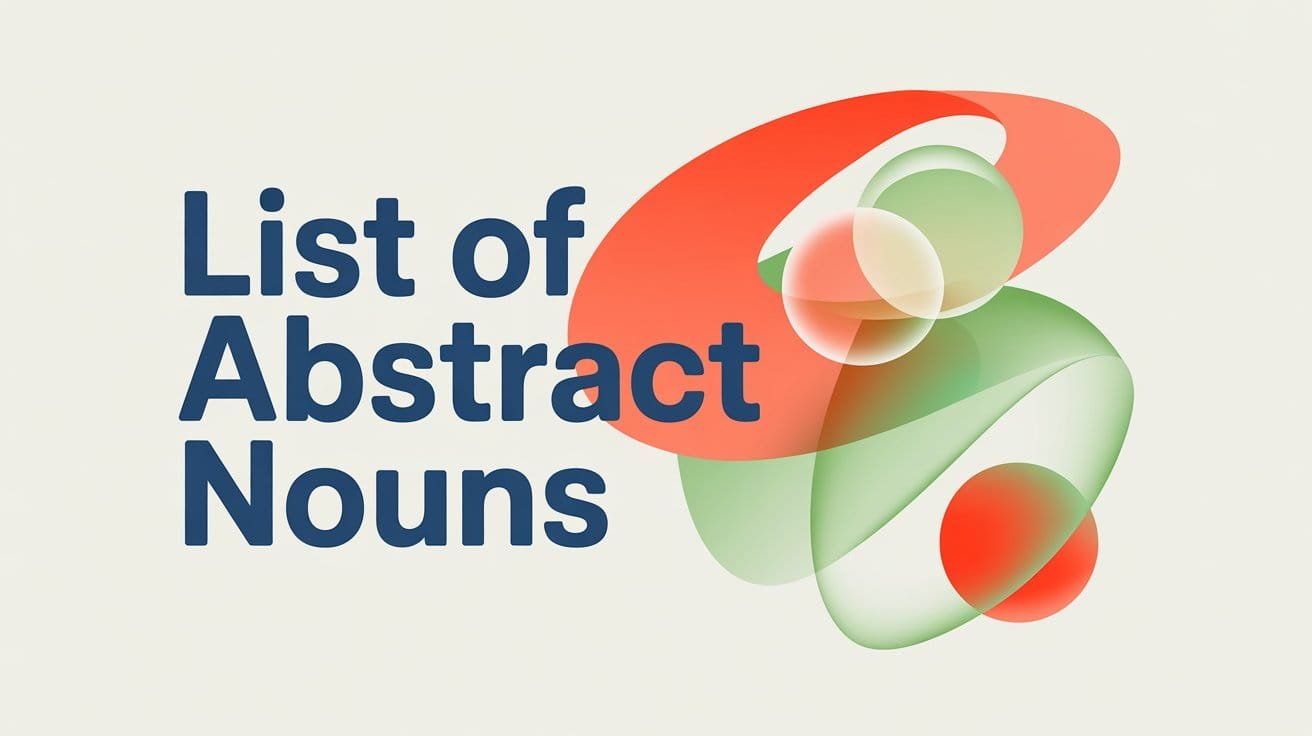In English, certain adjectives naturally fit with specific nouns. We say bright future instead of shiny future, and deep sleep rather than strong sleep. These familiar word combinations are known as adjective + noun collocations, and they give English its natural flow and rhythm.
You’ll hear and read these collocations everywhere — in everyday talk, books, and formal writing. In this guide, you’ll explore common adjective noun collocations, see how they form natural word partnerships, and learn practical ways to use them confidently.
Understanding Adjective + Noun Collocations
An adjective + noun collocation is a natural pairing where a specific adjective commonly appears with a particular noun. These combinations sound right to native speakers because they’ve been used repeatedly over time.
While you can technically place almost any adjective before a noun, not every combination sounds natural. For example, English speakers say strong argument but rarely powerful argument, and prefer narrow escape over thin escape. Both options are grammatically correct, but only one feels natural to native ears.
Certain adjectives simply ‘belong’ with certain nouns, such as ‘major concern,’ ‘fast train,’ and ‘deep understanding,’ because they’ve become standard in English communication.
Why Not Every Adjective + Noun Combination Is a Collocation
Grammatically, any adjective can modify a noun, but that doesn’t mean every combination is natural or commonly used. What makes an adjective–noun pair a true collocation is not just correctness, but habit and frequency.
Consider These Examples:
- Cold coffee is a natural and common phrase — you’ll hear it often. But while chilly coffee is grammatically fine, it sounds odd because “chilly” doesn’t typically collocate with beverages.
- Heavy traffic is a strong collocation in English. It’s widely used and immediately familiar. In contrast, thick traffic, while technically understandable, isn’t a standard phrase and would sound unusual.
- Strong password is the normal way to describe a secure password. Saying powerful password, though grammatically correct, feels off because it’s not the usual combination native speakers reach for.
- Fast food is a fixed and widely understood term. You could say quick food, but it’s not idiomatic and wouldn’t carry the same meaning or recognition.
- Deep sleep is a typical way to describe restful, uninterrupted sleep. Intense sleep, though grammatically possible, isn’t a natural collocation and would likely confuse listeners.
A collocation is therefore more than a correct adjective–noun pair; it’s a preferred combination that carries a natural sound and fits the rhythm of English.
When you start noticing which adjectives regularly occur with certain nouns, like severe headache, bright idea, global issue, or heavy rain, you begin to understand how English naturally builds meaning through patterns.
Everyday Adjective + Noun Collocations
Adjective + noun collocations appear in all areas of daily life. You’ll hear them in casual speech, read them in stories, and use them without realizing it.
Describing People and Appearance
These collocations help you describe physical traits or general looks.
Examples:
- broad shoulders
- bright smile
- curly hair
- clear skin
- deep voice
- slim figure
- long beard
- wrinkled face
- sharp eyes
- pale complexion
Emotions and Personality
Used to describe mood, character, or emotional reactions.
Examples:
- cheerful attitude
- calm nature
- generous heart
- kind gesture
- nervous laugh
- patient listener
- rude comment
- strong feeling
- bitter disappointment
- loyal friend
Daily Situations and Routines
These collocations appear in conversations about normal day-to-day events.
Examples:
- busy schedule
- quick shower
- long journey
- short break
- fresh start
- noisy neighbor
- early flight
- heavy traffic
- clean kitchen
- comfortable chair
Weather and Nature
Common collocations for talking about seasons, climate, and the environment.
Examples:
- heavy rain
- bright sunshine
- clear sky
- thick fog
- strong wind
- chilly morning
- rough sea
- pleasant climate
- freezing temperature
- gentle breeze
Objects and Materials
Used when describing physical qualities of things around you.
Examples:
- fragile glass
- wooden table
- soft pillow
- sharp knife
- flat surface
- smooth fabric
- torn paper
- round mirror
- plastic bottle
- broken window
Situations and Events
Used when describing conditions, experiences, or occasions.
Examples:
- serious problem
- major change
- unexpected event
- public meeting
- local festival
- successful project
- critical moment
- temporary delay
- important decision
- sudden interruption
Adjective + Noun Collocations in Academic and Formal English
In academic and professional English, adjective + noun collocations help writers express ideas precisely and formally. These combinations appear in essays, research papers, reports, and business communication because they sound polished and accurate.
For example, phrases like significant improvement or major concern are common in formal writing, while alternatives such as big improvement or large concern would sound too casual.
Common Collocations in Academic and Professional Contexts
- significant impact
- detailed analysis
- critical issue
- relevant data
- substantial evidence
- global challenge
- complex problem
- effective strategy
- appropriate response
- positive outcome
Collocations Used in Business and Reports
- annual report
- financial risk
- strategic plan
- potential market
- successful negotiation
- key objective
- internal policy
- legal requirement
- professional development
- long-term investment
Patterns and Classes of Adjective + Noun Collocations
Adjective + noun collocations often follow certain patterns. Some adjectives are widely used because they combine naturally with many nouns, while others have limited but very strong pairings.
Collocations with “Strong” and Similar Adjectives
The adjective strong often pairs with nouns that express emotion, effect, or influence.
Examples:
- strong argument
- strong connection
- strong leadership
- strong feeling
- strong will
- strong foundation
- strong relationship
- strong opposition
- strong preference
- strong belief
Collocations with “Deep” and “High”
Deep often suggests depth of emotion or thought, while high is used for levels, standards, or degrees.
Examples:
- deep understanding
- deep concern
- deep sleep
- deep respect
- deep knowledge
- high temperature
- high quality
- high demand
- high speed
- high priority
Collocations with “Heavy” and “Light”
Used to describe physical weight, emotion, or difficulty.
Examples:
- heavy rain
- heavy workload
- heavy traffic
- heavy smoker
- heavy responsibility
- light breeze
- light meal
- light rain
- light schedule
- light conversation
Collocations with “Major,” “Minor,” and “Serious”
These adjectives are common in formal, analytical, or evaluative writing.
Examples:
- major challenge
- major advantage
- major role
- minor issue
- minor error
- serious concern
- serious injury
- serious problem
- serious illness
- serious risk
Collocations with “Fast,” “Slow,” and “Quick”
These adjectives describe pace, progress, or reaction.
Examples:
- fast growth
- fast train
- fast food
- slow progress
- slow recovery
- slow response
- quick look
- quick answer
- quick recovery
- quick decision
Collocations with “Big,” “Large,” and “Great”
These adjectives describe size, scale, or degree but differ in tone and usage.
Examples:
- big city
- big problem
- large amount
- large company
- large population
- great success
- great opportunity
- great idea
- great achievement
- great responsibility
Mixed or Complex Adjective Collocations
Not all adjective collocations are limited to just two words. In real English, you’ll often find multi-word or complex adjective collocations that combine adjectives with prepositions, modifiers, or additional nouns.
Adjective + Noun + Preposition Combinations
These collocations include a noun followed by a preposition that completes the meaning.
Examples:
- aware of danger
- familiar with technology
- full of energy
- capable of success
- proud of achievement
- similar to others
- rich in minerals
- responsible for results
- independent of opinion
- satisfied with outcome
Multi-Adjective Combinations
Sometimes two or more adjectives combine naturally before a noun to describe it precisely.
Examples:
- major global challenge
- clear long-term goal
- small rural community
- strong emotional bond
- bright sunny morning
- large financial risk
- serious environmental issue
- valuable educational resource
- high professional standard
- deep personal connection
Extended Adjective Patterns
Some collocations form longer, phrase-like structures that sound natural and idiomatic.
Examples:
- open to discussion
- ready for action
- aware of the situation
- full of life
- available on request
- dependent on context
- committed to excellence
- interested in learning
- suitable for beginners
- consistent with results
Tips to Learn and Use Adjective + Noun Collocations
Adjective + noun collocations become easier to remember when you study them in context and use them regularly. The goal is not to memorize long lists, but to build awareness of which adjectives naturally fit with which nouns.
Learn in Real Contexts
Pay attention to adjective–noun combinations as you read or listen to English. When you see phrases like strong relationship or high demand, write them down with an example sentence.
Example: There is a high demand for electric vehicles this year.
The more you notice real examples, the faster you’ll develop a natural sense for what sounds right.
Group Collocations by Theme or Adjective
Organizing collocations helps you see patterns and remember them easily.
Example (grouped by adjective): strong argument, strong foundation, strong belief
Example (grouped by theme): bright future, bright light, bright smile
Use a Collocation Dictionary or Online Tool
Resources such as the Oxford Collocations Dictionary or JustTheWord show you which adjectives commonly pair with a given noun. For example, searching for decision might show difficult decision, final decision, and important decision — all natural collocations used in real English.
Use Collocations in Your Writing
When writing essays, emails, or reports, consciously include adjective + noun collocations.
- The team achieved a positive result after months of testing.
- We must find an effective solution to reduce costs.
Review and Reuse Regularly
Review collocations each week and try using them in new contexts. Repetition turns passive recognition into active recall, helping you use the right adjective naturally without hesitation.



